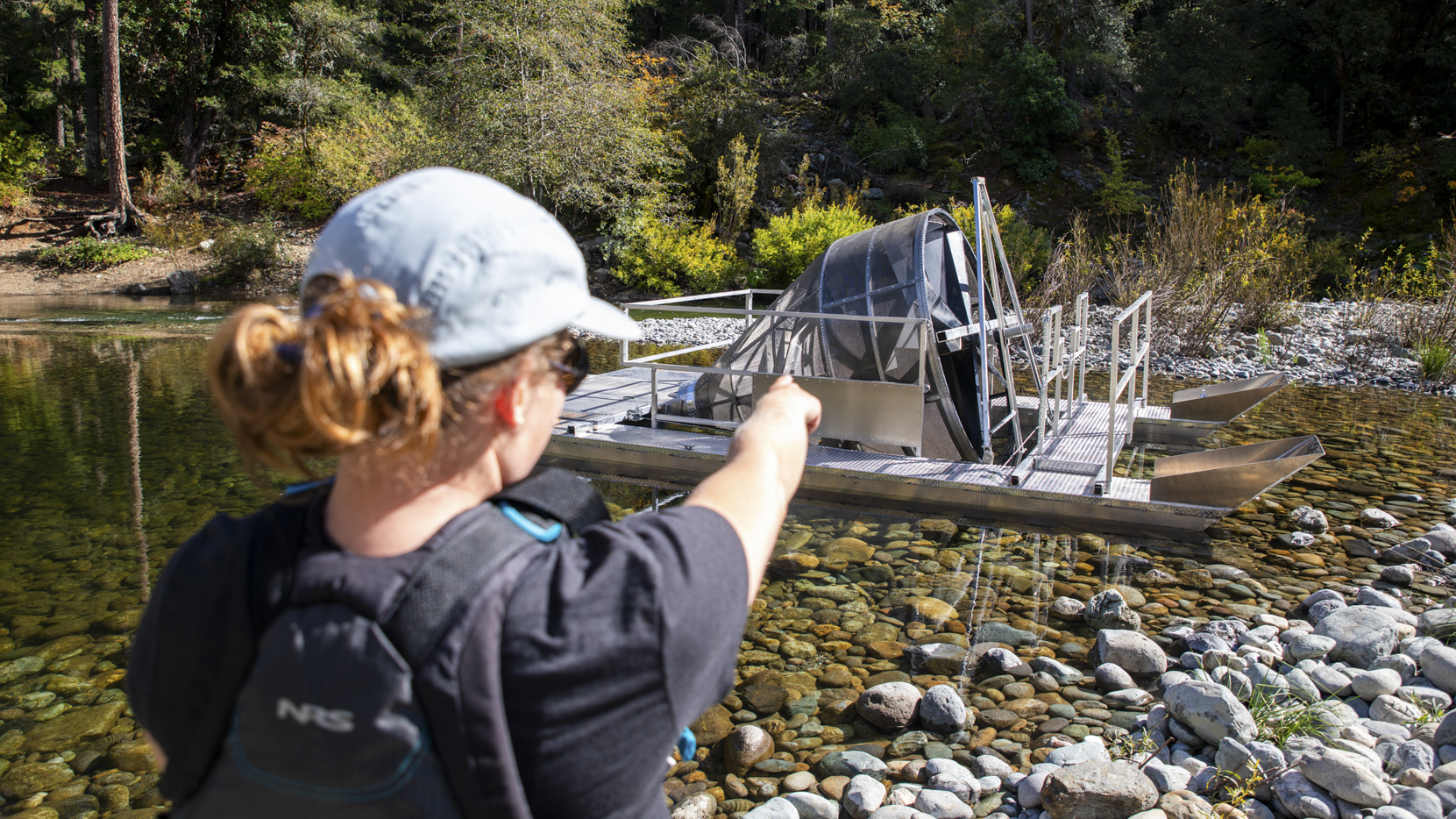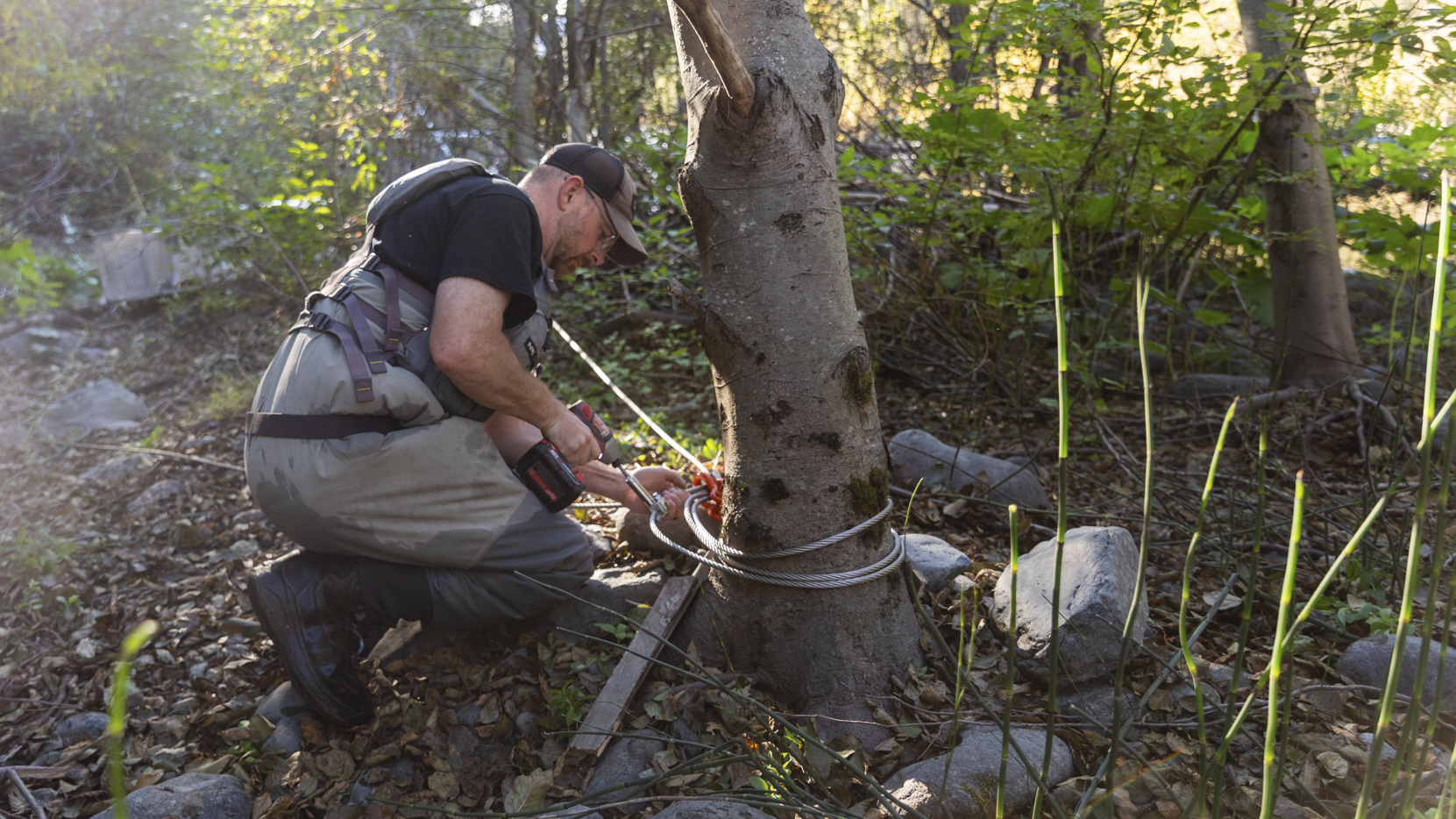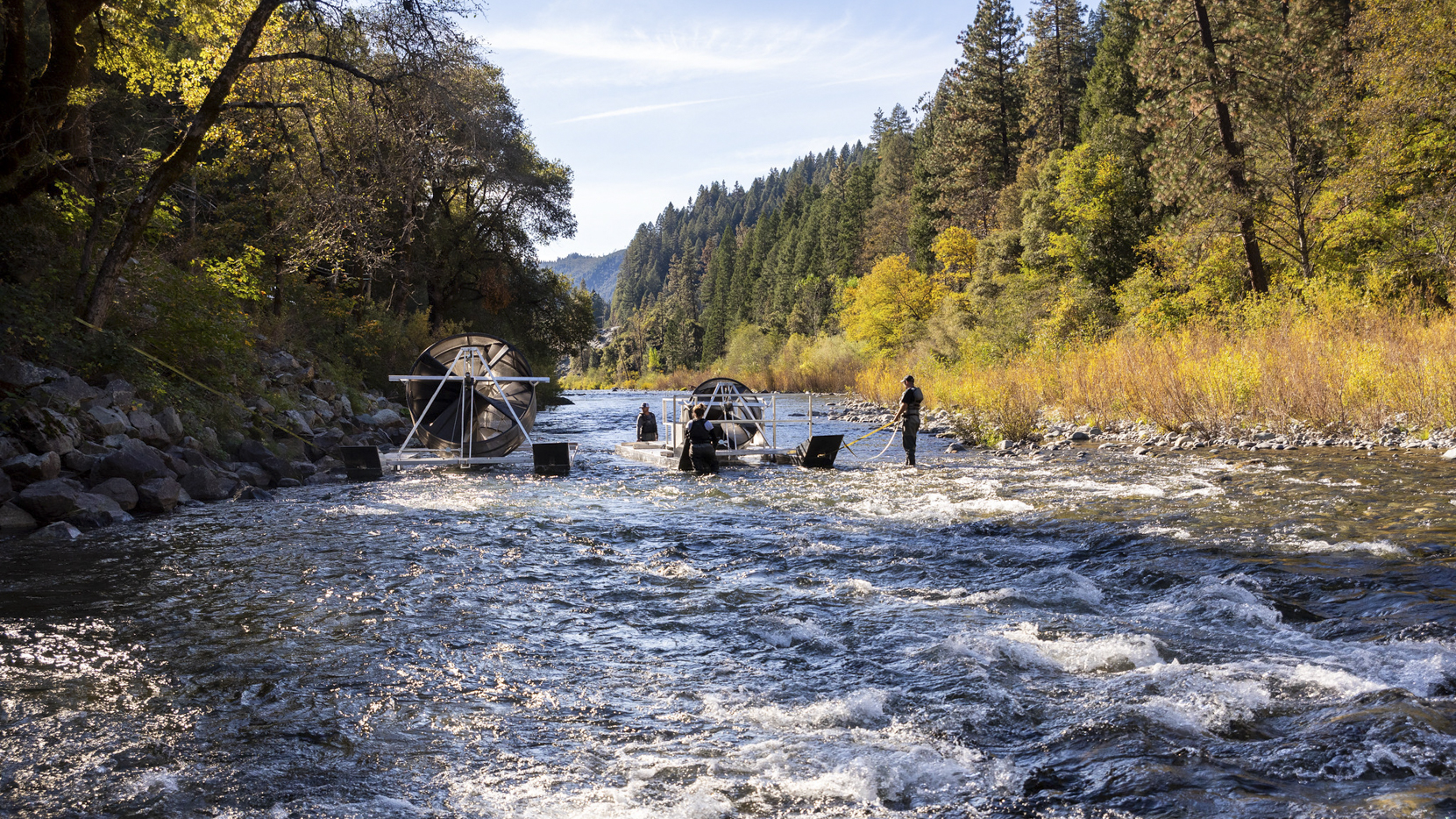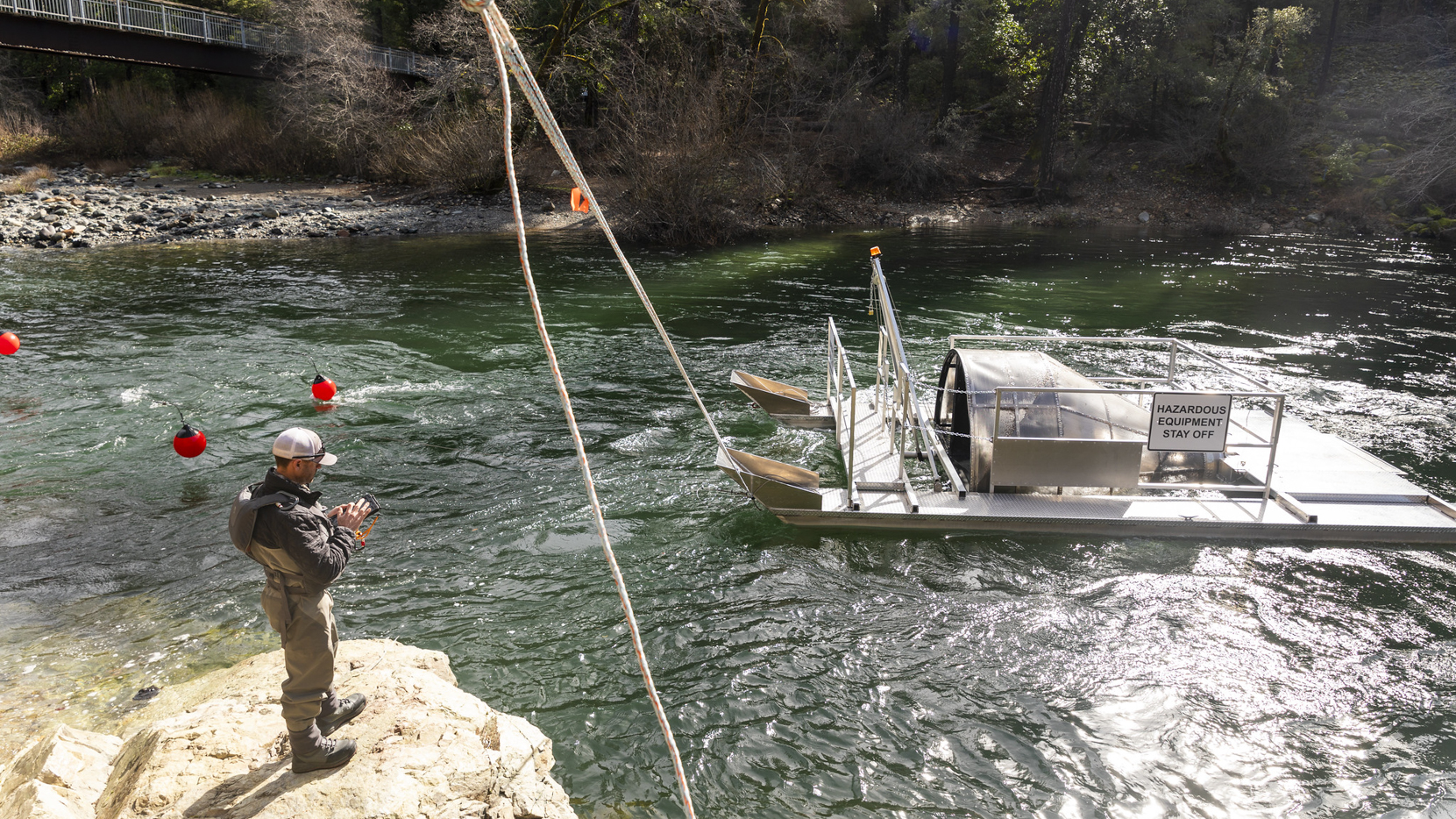


Rotary screw traps (RSTs) are an essential tool for biologists studying salmonid populations. Rotary screw traps can be operated at a fixed location for extended periods of time, and when utilized properly, can provide credible estimates of juvenile abundance and downstream migration timing. The Yuba Reintroduction Working Group (YRWG) is a collection of State and Federal agencies, non-governmental organizations (NGOs), the Yuba Water Agency, and other stakeholders, focused on investigating the biological, technical, and financial feasibility of reintroducing spring-run Chinook salmon (Oncorhynchus tshawytscha) to historical spawning habitat in the upper Yuba River Watershed. To begin the investigation, RSTs were chosen as a potential collection method for capturing introduced juvenile spring-run Chinook salmon.
Over a three-year period, FISHBIO was involved in three main phases of the project which involved RST site assessment and selection, permitting, performance evaluations, and finally, daily trapping of juvenile spring-run Chinook salmon that were introduced in the North Yuba River. Upon completion of FISHBIO’s assessment of potential RST sites in the North Yuba River, two locations were chosen for conducting RST performance evaluations based on ease of access, safety, and channel characteristics. One of these sites was along Old Toll Bridge Road (near Goodyears Bar), and the other was at Rocky Rest Campground.
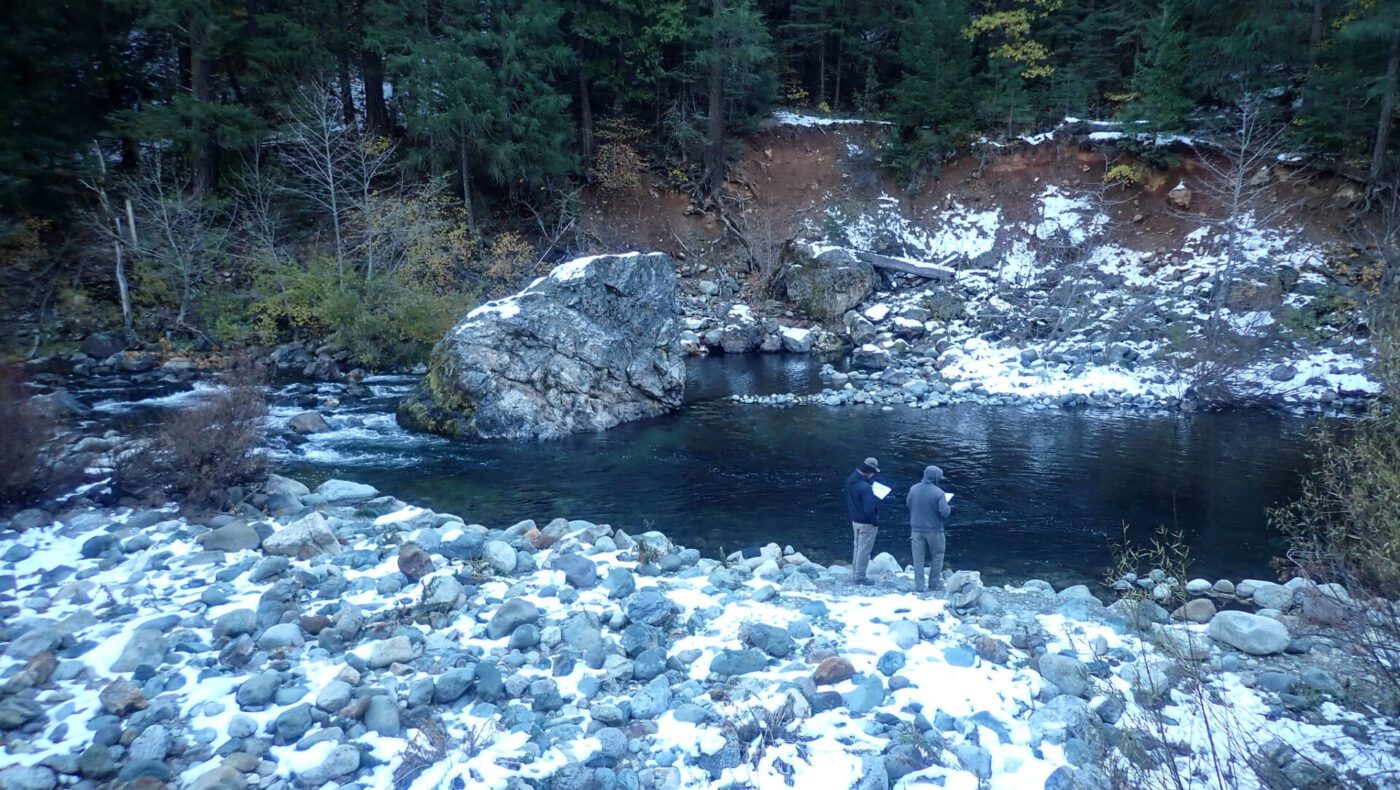


During the RST evaluation phase, our crews monitored RST performance throughout a range of flows to determine the upper limits of safe and effective RST operations. Crews tracked the North Yuba’s hydrograph closely, responding to storm events to collect relevant data during each site visit. RST performance data was comprised of both qualitative and quantitative data – including cone revolutions, debris loading, stage height, turbidity, water velocity, number and type of recreationists observed, and whether the RSTs posed safety risks to kayakers and rafters. When sampling a flow (river discharge), the RST cone was lowered into the water for a predetermined duration. The main objectives of the RST evaluations were to test the range of flows at which the RSTs could be safely and effectively operated, and based on the historical hydrology, determine what percentage of the juvenile salmon migration season the RSTs could be expected to operate. Note: fish were not trapped during this phase.


The following trapping season, Feather River Hatchery (FRH) Chinook salmon eggs were injected into artificial redds in the North Yuba River, and the fish collection phase of the project began. During this phase, two groups of salmon were caught in the RST at Rocky Rest Campground site. One group included juvenile Chinook that hatched from artificial redds upstream, and the other were juvenile “efficiency” salmon (from the same FRH broodstock as the salmon injected into the river), which were outfitted with visual tags and released upstream of the trap each week, for the purpose of conducting trap efficiency trials.
FISHBIO staff processed the RST during daily site visits, netting young salmon and safely transferring them to project partners for further processing. At the conclusion of these three project phases, RSTs were determined to be viable for operation in the North Yuba River and are expected to be an integral fish collection mechanism for the Spring-run Chinook salmon re-introduction program.
Header Image: FISHBIO staff checking the RST deployed at Rocky Rest.
